When it comes to infrastructure, few structures match the scale and ambition of the world’s longest bridges. These engineering feats span cities, rivers, lakes, and entire regions, linking transport systems, accelerating economies, and redefining what is possible.
This article ranks the 10 longest bridges in the world by total linear length as of 2025. These records measure full bridge length, including approaches and spans, capturing accurate engineering scale and impact.
While many of the top spots are held by Chinese high-speed rail viaducts, a new wave of massive elevated highways is emerging in countries like Bangladesh and the Philippines.
Key Definitions for Context:
- Total Length: Includes the full continuous span of the bridge structure, not just the segment over water or a valley.
- Main Span: The longest unsupported stretch between two towers or piers.
- Continuous Over Water: Total bridge length uninterrupted over a water surface.
- Aggregate Over Water: Total length of segments over water, even if separated by land.
Understanding these definitions is crucial. For example, the Lake Pontchartrain Causeway holds the Guinness record for the longest continuous bridge over water. In contrast, others, such as the Jiaozhou Bay Bridge, have records based on the aggregate water length.
As of 2025, no new bridges have surpassed the current top 10 in terms of total linear length. Engineering priorities are shifting toward height, resilience, and overcoming rugged terrain, rather than simply extending distance.
1. Danyang-Kunshan Grand Bridge: The Longest Bridge in the World
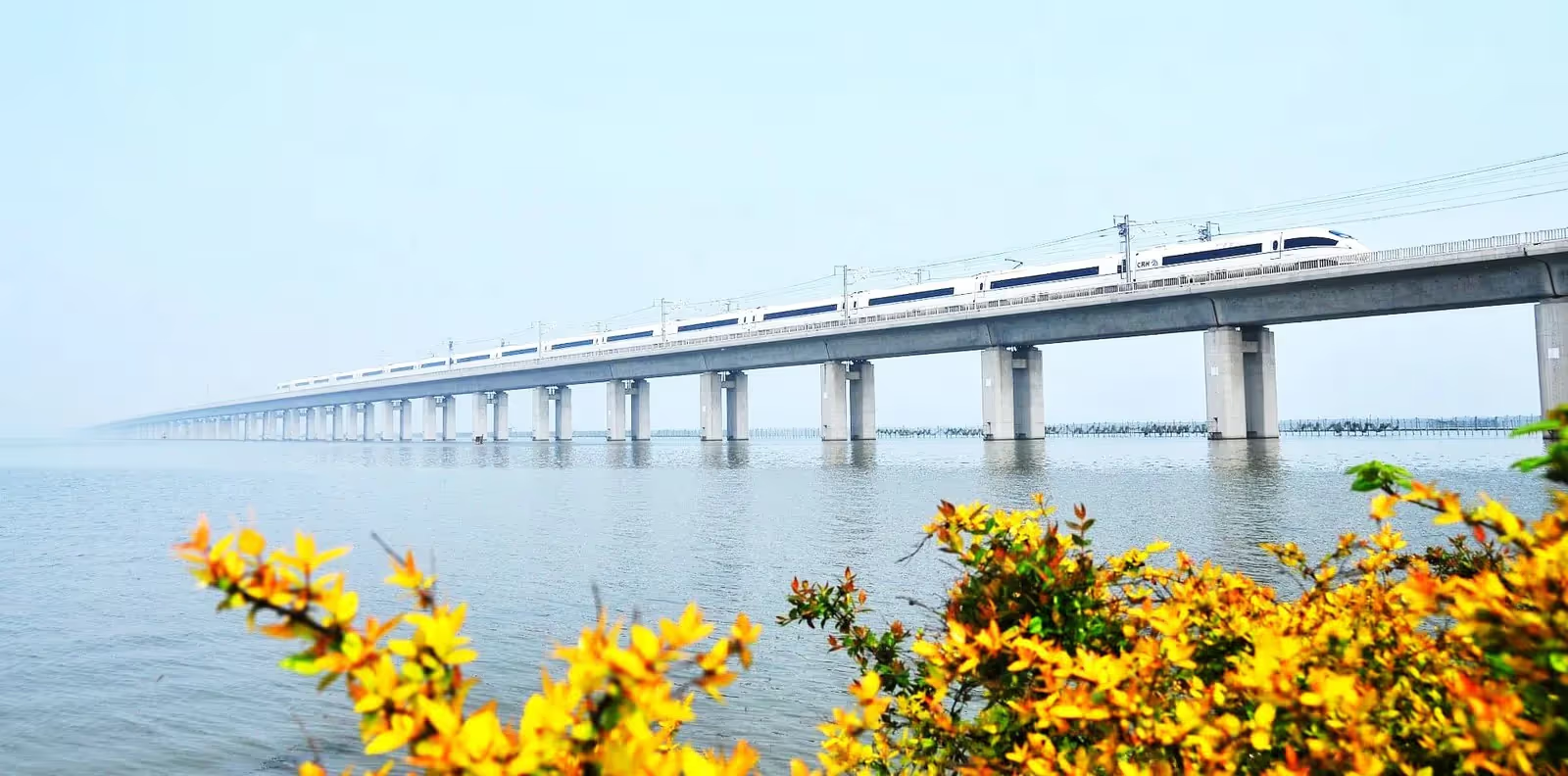
The Danyang-Kunshan Grand Bridge is the longest bridge in the world. Located in Jiangsu Province, China, it supports the Beijing–Shanghai High-Speed Railway and stretches an incredible 164.8 kilometers (102.4 miles).
Timeline and Context for Danyang–Kunshan Grand Bridge
The construction of the Danyang–Kunshan Grand Bridge followed a clearly defined set of phases. Each step reveals how this record-breaking structure came together:
- Length: 164.8 km (102.4 miles)
- Construction Began: 2006
- Completed: 2010
- Cost: US$8.5 Billion
- Type: Elevated viaduct for high-speed rail
Running through cities, wetlands, lakes, and rice fields, the Danyang-Kunshan Grand Bridge was designed to enhance travel speeds and mitigate the impacts of floods in low-lying areas. It also set a Guinness World Record for being the world’s longest bridge by total length.
What Makes the Danyang-Kunshan Grand Bridge Unique
Danyang-Kunshan Grand Bridge’s record-breaking scale came from bold engineering and smart design. These decisions made its massive span possible:
- Designed to handle seismic activity and regional flooding.
- Constructed with over 9,500 concrete piers.
- Supports trains at speeds up to 300 km/h.
Wondering which long bridge holds the current global record? The Danyang-Kunshan Grand Bridge remains the longest and biggest bridge in the world today.
2. Changhua-Kaohsiung Viaduct: Taiwan’s Backbone for High-Speed Rail

The Changhua-Kaohsiung Viaduct ranks as the second-longest bridge in the world. It forms a critical part of the Taiwan High Speed Rail network, connecting cities along the island’s western corridor.
Timeline and Context for Changhua-Kaohsiung Viaduct
Taiwan built this massive viaduct with a focus on seismic safety and long-term durability. The following milestones highlight the project’s major phases:
- Length: 157.3 km (97.7 miles)
- Construction Began: 1999
- Completed: 2007
- Cost: US$8.0-8.5 Billion
- Type: High-speed rail viaduct
The Changhua-Kaohsiung Viaduct crosses flood-prone plains, urban zones, and farmland, elevated to protect against seismic shifts. It was designed to allow trains to stop safely on the bridge during earthquakes, making it one of the most resilient long-span structures globally.
Why the Changhua–Kaohsiung Viaduct Stands Out
Taiwan balanced speed and safety to build one of the most resilient rail bridges. These features define the Changhua-Kaohsiung Viaduct’s engineering excellence:
- Built in one of the world’s most active seismic zones.
- Allows full-speed travel between major cities.
- Integrates earthquake-resistant bridge engineering.
Looking for Taiwan’s longest bridge or a rail viaduct built for earthquakes? The Changhua–Kaohsiung Viaduct delivers both.
3. Tianjin Grand Bridge: China’s Elevated Powerhouse
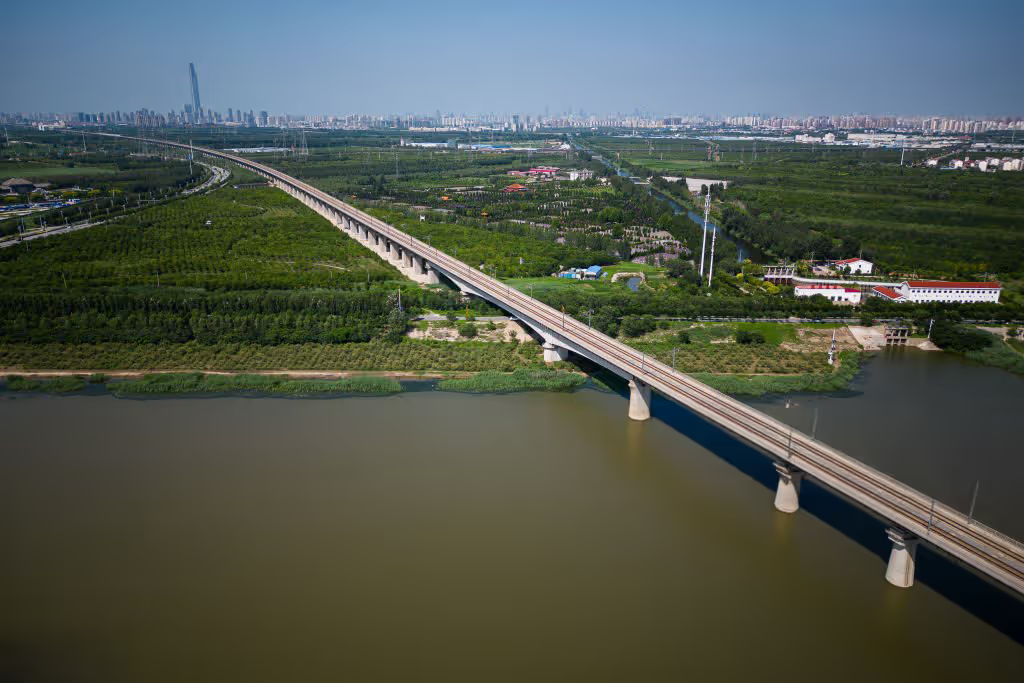
The Tianjin Grand Bridge is the third-longest bridge in the world and one of the most crucial connectors on the Beijing–Shanghai High-Speed Railway. It runs between Langfang and Qingxian, north of Tianjin.
Timeline and Context of the Tianjin Grand Bridge
China built the Tianjin Grand Bridge to power rapid rail expansion across key regions. These milestones capture the scale and pace of construction:
- Length: 113.7 km (70.6 miles)
- Construction Began: 2006
- Completed: 2010
- Cost: Part of Beijing-Shanghai High-Speed Railway (HSR) US $32 billion and $34.7 billion
- Type: Elevated viaduct for high-speed rail
Built to span rivers, roads, and flood zones, the Tianjin Grand Bridge allows trains to bypass ground-level obstructions while maintaining ultra-high speeds.
Engineering Highlights of the Tianjin Grand Bridge
Engineers prioritized speed, stability, and streamlined construction. These features show how the Tianjin bridge meets high-speed rail demands:
- Designed to reduce travel time from Beijing to Shanghai.
- Built using modular precast segments for faster assembly.
- Handles high-speed rail traffic daily with minimal vibration.
The Tianjin Grand Bridge remains one of the longest rail bridges worldwide. Its presence strengthens China’s lead in high-speed rail development.
4. Cangde Grand Bridge: Built for Strength Across the Wei River

The Cangde Grand Bridge is the fourth-longest bridge in the world. It also belongs to the Beijing–Shanghai High-Speed Railway, reinforcing China’s position as the leader in long-span infrastructure.
Timeline and Context of the Cangde Grand Bridge
The Cangde Grand Bridge crosses the Wei River, one of China’s key waterways. With over 3,000 piers, it was engineered to endure frequent seismic activity while maintaining structural integrity over decades of use.
These milestones show how it became a vital part of China’s high-speed rail:
- Length: 105.8 km (65.7 miles)
- Construction Began: 2006
- Completed: 2010
- Cost: Part of Beijing-Shanghai High-Speed Railway (HSR) US $32 billion and $34.7 billion
- Type: High-speed rail viaduct
Key Features of the Cangde Grand Bridge
Design choices centered on durability, seismic resistance, and long-term performance. Each feature below contributes to the bridge’s structural resilience:
- Seismic-resistant design for the Wei River floodplain.
- Heavy-duty reinforced concrete structure.
- One of the most stable viaducts on the line.
The Cangde Grand Bridge forms a key section of the world’s busiest high-speed rail line. This high-speed viaduct reflects China’s strength in large-scale rail engineering.
5. Weinan Weihe Grand Bridge: Steel and Concrete Across Central China
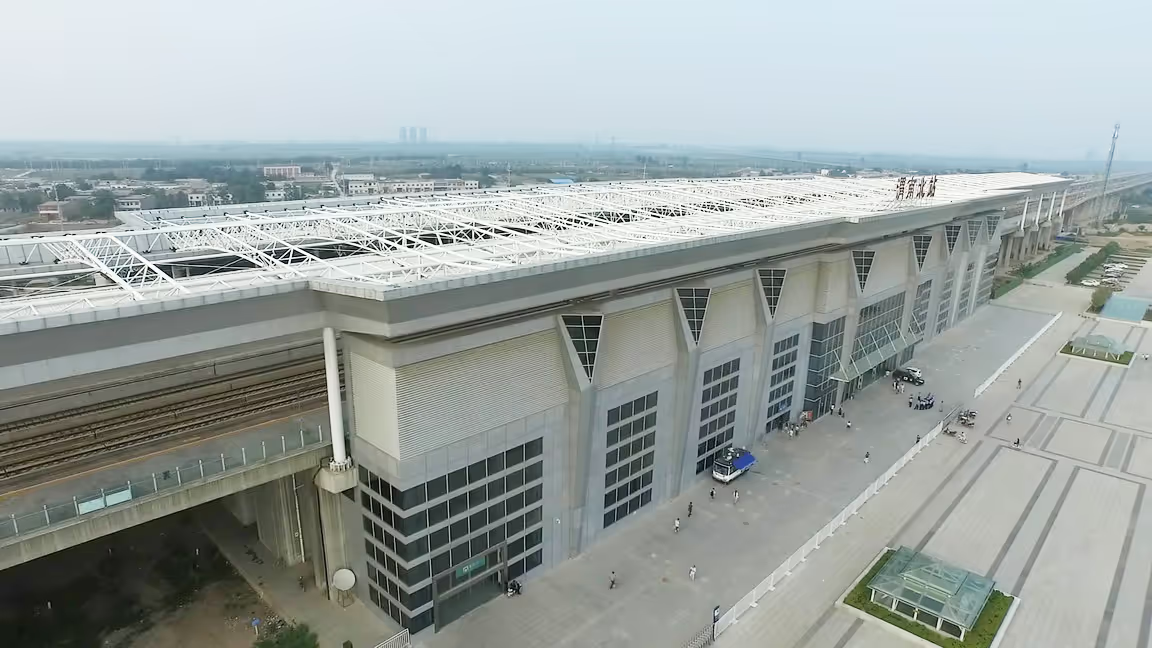
The Weinan Weihe Grand Bridge ranks fifth among the longest bridges in the world. It forms part of the Zhengzhou–Xi’an High-Speed Railway, crossing multiple waterways in China’s Shaanxi Province.
Timeline and Context of the Weinan Weihe Grand Bridge
China built the Weinan Weihe Grand Bridge to connect key corridors across central provinces. Linking major transit routes, the project helped boost national rail capacity:
- Length: 79.7 km (49.5 miles)
- Construction Began: 2005
- Completed: 2008
- Cost: US$ 1 Billion
- Type: High-speed rail viaduct
The Weinan Weihe bridge spans the Wei River, a major tributary of the Yellow River, and also crosses highways, rail lines, and local infrastructure. Its total length once earned it a temporary spot as the world’s longest bridge before the Beijing–Shanghai corridor overtook it.
Engineering Standouts of the Weinan Weihe Grand Bridge
Design focused on scale, elevation, and multi-use rail efficiency. Each element below reflects that intent:
- Elevated sections built to avoid flooding zones.
- Uses continuous beam and box girder construction.
- Supports rapid train travel across multiple districts.
The Weinan Weihe Grand Bridge stands as a vital link in China’s rail system. This long-span viaduct drives high-speed expansion across central provinces.
6. Bang Na Expressway: The Longest Elevated Highway in the World
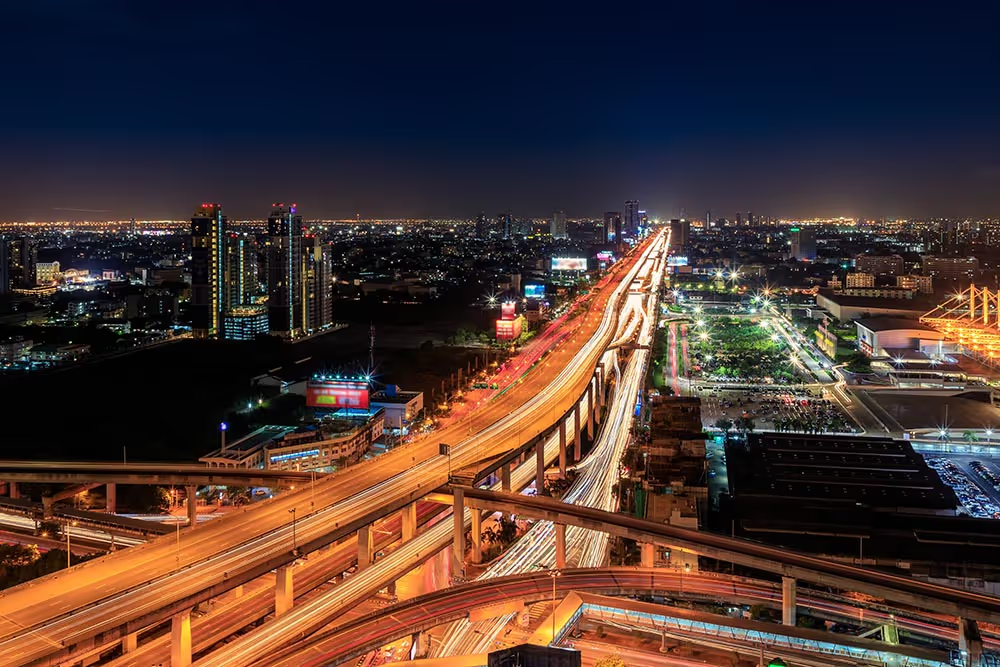
The Bang Na Expressway, also known as the Burapha Withi Expressway, is the longest car bridge in the world by total length. Located in Thailand, this elevated highway spans 54 kilometers over a heavily congested urban area.
Timeline and Context of the Bang Na Expressway
Bangkok built the Bang Na Expressway to relieve congestion with a massive elevated road. This timeline shows how the world’s longest elevated highway took shape:
- Length: 54.0 km (33.6 miles)
- Construction Began: 1995
- Completed: 2000
- Cost: US$1 Billion
- Type: Elevated highway (toll road)
Unlike world's most long bridges, the Bang Na Expressway doesn't cross a river, sea, or valley. It floats above existing roadways, forming a multi-level system. Its elevation varies. Minimum column height is 16 meters (52.5 feet).
The Bang Na Expressway reaches 30 meters (98.4 feet) over National Highway Route 34. This eases Bangkok traffic without disrupting ground infrastructure.
What Makes the Bang Na Expressway Unique
Engineers constructed the elevated Bang Na Expressway to efficiently move vehicles across metropolitan Bangkok. Its defining characteristics include:
- Constructed with 1.8 million cubic meters of concrete.
- Runs parallel to Thailand’s Route 34.
- Features multiple on and off-ramps across Metro Bangkok.
Though the Bang Na Expressway doesn’t hold records for water crossings, it’s still the longest bridge for vehicles by total length and a world-class example of elevated transport infrastructure.
7. Beijing Grand Bridge: A Northern Gateway for China’s Bullet Trains
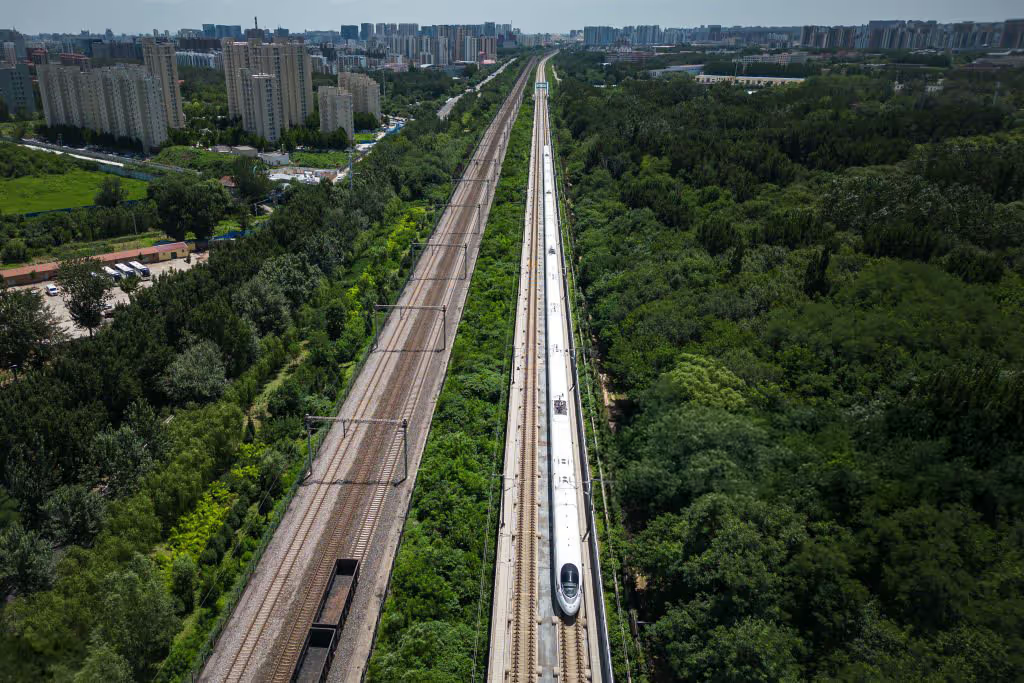
The Beijing Grand Bridge ranks as the seventh-longest bridge in the world. It’s a vital segment of the Beijing–Shanghai High-Speed Railway, guiding bullet trains directly into China’s capital region.
Timeline and Context of the Beijing Grand Bridge
Engineers built the Beijing Grand Bridge to streamline rail movement through the capital’s outskirts. Key milestones mark how this essential link came to life:
- Length: 48 km (29.9 miles)
- Construction Began: 2006
- Completed: 2010
- Cost: Part of Beijing-Shanghai High-Speed Railway (HSR) US $32 billion and $34.7 billion
- Type: High-speed rail viaduct
This rail bridge spans the outskirts of Beijing, enabling trains to bypass dense road traffic and terrain changes. It seamlessly connects urban zones with the country’s flagship rail network.
Notable Features of the Beijing Grand Bridge
The Beijing Grand Bridge plays a key role in moving high-speed rail traffic through the capital. Several standout design choices make that possible:
- Supports travel speeds up to 300 km/h.
- Built with prefabricated box girders for efficient construction.
- Reduces travel time to nearby provinces and logistics hubs.
The Beijing Grand Bridge exemplifies how intelligent design and modern rail technology can transform regional transportation. It’s also one of the most visible structures on the route, literally bridging the past and future of Chinese infrastructure.
8. Dhaka Elevated Expressway: Bangladesh’s First Mega Viaduct
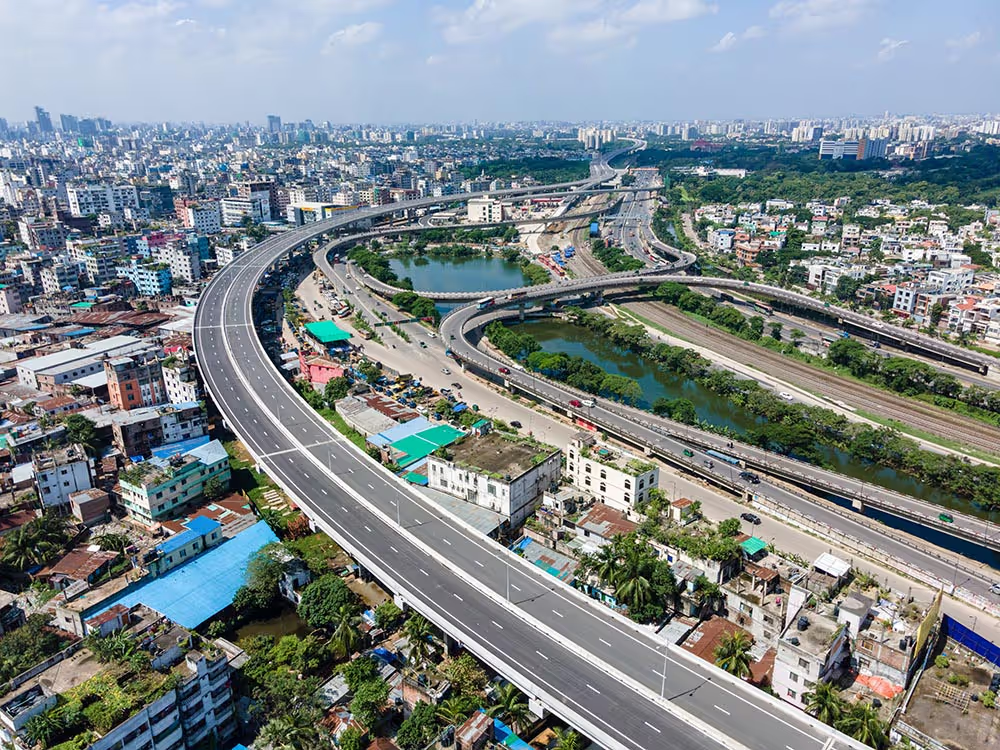
The Dhaka Elevated Expressway is the first of its kind in Bangladesh, spanning 46.73 kilometers (29.0 miles) across one of the world's most densely populated cities. Completed in 2023, it serves as a vital bypass above chaotic ground-level traffic.
Timeline and Context of the Dhaka Elevated Expressway
Bangladesh built its first large-scale elevated expressway to ease Dhaka’s chronic congestion. This timeline captures how the Dhaka Elevated Expressway project unfolded in stages:
- Length: 46.73 km (29.0 miles)
- Construction Began: 2011
- Completed: 2023
- Cost: US$ 1 Billion
- Type: Elevated highway viaduct
Built to ease gridlock in central Dhaka, the Dhaka Elevated Expressway signals a growing wave of mega-infrastructure projects emerging from developing nations.
What Makes the Dhaka Elevated Expressway Significant
This Dhaka Elevated Expressway stands as a milestone in Bangladesh’s transport evolution. Several core features define its impact:
- Designed to reduce travel time across key commercial zones.
- Constructed in multiple phases through a public-private partnership.
- First major elevated expressway in the country.
Many countries beyond China are now building large-scale bridges. Dhaka’s Elevated Expressway project shows how developing cities are adapting to rapid urban growth.
9. Metro Manila Skyway System: Elevated Highway Across the Philippine Capital
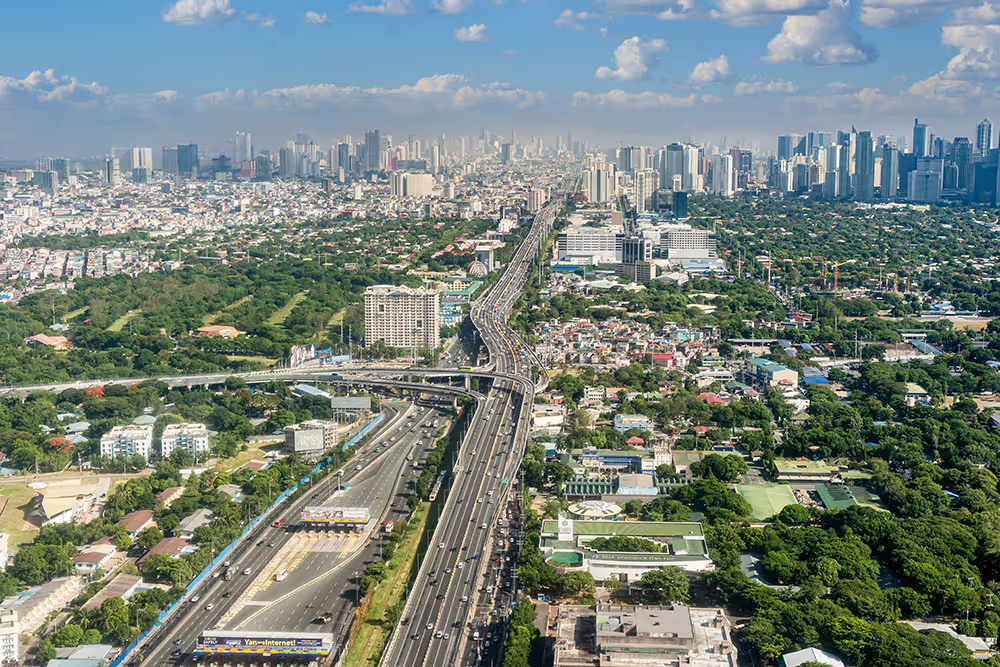
The Metro Manila Skyway System is a major elevated expressway spanning 39.2 kilometers (24.4 miles) through the heart of the Philippines' capital region. Completed in 2021, it provides a faster alternative to ground-level congestion.
Timeline and Context of the Metro Manila Skyway
The Philippines developed its most significant elevated expressway to address Metro Manila’s growing traffic crisis. The timeline below shows how the project unfolded across multiple phases:
- Length: 39.2 km (24.4 miles)
- Construction Began: 1995 (Phases I–III)
- Completed: 2021 (Final major segments)
- Cost: US$ 217 Million (Stage 1), US$ 44 Million (Stage 2)
- Type: Elevated expressway viaduct
Built above ground-level traffic, the elevated highway links key areas across Metro Manila. Travel becomes faster between commercial centers and nearby districts.
Why the Metro Manila Skyway Stands Out
Metro Manila’s Skyway delivers a city-wide traffic fix through decades of phased expansion. Its most defining elements include:
- Built in multiple stages over two decades.
- Integrated with NAIA Expressway and other major corridors.
- Significantly cuts travel time across Metro Manila.
The Metro Manila Skyway project reflects Southeast Asia’s push to build long-span expressways. This long elevated bridge supports growing megacities facing rising traffic demands.
10. Lake Pontchartrain Causeway: Longest Continuous Bridge Over Water
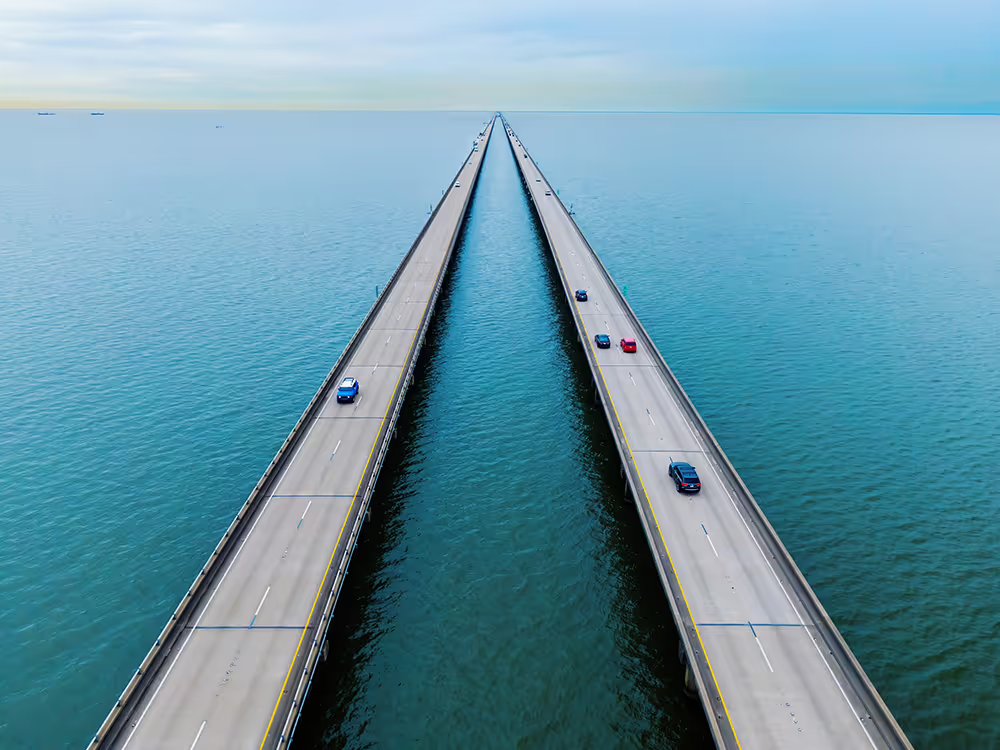
The Lake Pontchartrain Causeway stretches 38.44 kilometers (23.9 miles) over Lake Pontchartrain in Louisiana, USA. Composed of two parallel spans, it was once the longest bridge in the world and still holds the Guinness World Record for the longest continuous bridge over water.
Timeline and Context of the Lake Pontchartrain Causeway
The U.S. built the Lake Pontchartrain Causeway to connect southern Louisiana communities over open water. Key dates show how this record-holding span came together:
- Construction Began: 1955
- Completed: 1956 (first span), 1969 (second span)
- Cost: US$ 46 Million (first span), US$ 30 Million (second span)
- Length: 38 km (23.9 miles)
- Type: Highway over water (low-level trestle)
Built for cars and commuters, Lake Pontchartrain Causeway links Metairie and Mandeville across open water. The structure endures hurricanes, flooding, and constant daily traffic.
What Makes Lake Pontchartrain Causeway a Record-Holder
The Lake Pontchartrain Causeway bridge earned its global title due to its scale and marine-friendly design. Its core features include:
- Retains title for longest uninterrupted water crossing.
- Supported by thousands of pre-stressed concrete pilings.
- Mid-span drawbridge allows for marine traffic passage.
Lake Pontchartrain Causeway remains an American engineering icon. It stands as a landmark of 20th-century bridge construction.
Other Record-Breaking Bridges by Span Type
Not all longest bridges in the world rank by total linear length. Some hold titles in other categories worth noting:
- 1915 Çanakkale Bridge (Turkey): Holds the record for the longest suspension bridge in the world by main span (2,023 meters), not total length.
- Evergreen Point Floating Bridge (USA): Known as the longest floating bridge in the world, it was built on pontoons across Lake Washington.
- Jiaozhou Bay Bridge (China): Often cited as the longest underwater bridge in the world due to its submerged tunnel section, but its total uninterrupted length doesn’t qualify for this list.
- Chaotianmen Bridge (China): Holds the record for the longest arch bridge in the world by arch span, not by full span or total length.
These huge and lengthy structures highlight how definitions like main span, floating section, or underwater component create entirely different record categories. They're iconic in their own right, even if they don’t appear in this total-length ranking.
Looking Beyond Length: The Future of Bridge Engineering
What makes these world's longest bridges worth watching isn’t just their size - it’s what they signal. By 2025, record-setting efforts have shifted from total length to structural complexity, with engineers now tackling height, terrain, and extreme environments.
This shift marks a turning point for infrastructure and construction leaders. Future bridges must solve more complex problems, not just stretch farther. Success will come from spans that adapt, endure, and push what's possible even further.















